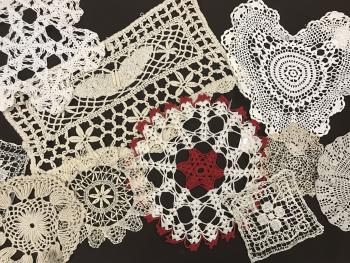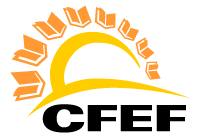
FIND IT FUND IT FLORIDA
Artisans and Old Lace

- School:
- Barron Collier High
- Subject:
- Art
- Teacher:
- Leslie Loughran
- Students Impacted:
- 200
- Grade:
- 9-12
- Date:
- August 21, 2018
Investor
Thank you to the following investor for funding this grant.
Perna-Rose Foundation for Hope - $282.44
Goal
TEXTURE! Texture is one of the fundamental elements of art. As students grow and develop their skills as potters, I want them to move from the beginning goal of creating a clean, smooth piece of pottery to creating pottery with interesting texture and design.
What will be done with my students
As I was traveling along the East Coast this summer, I visited a variety of antique, resale, and thrift stores and noticed an abundance of old lace doilies, coasters, and dresser scarves. Many had beautiful shapes and patterns, but their function has become outmoded—no one uses doilies on the back or arms of chairs anymore or to line the top of their dressers. But, being a ceramics instructor, I immediately saw an opportunity to create texture, pattern, and design in clay pieces. A bit of googling informed me that I was not the first person to come up with this idea and the pottery they were creating was gorgeous. So, I began to collect old lace. Next I met with one of my former instructors and she helped me devise a method for teaching the students that was not too complex and would yield successful results using GR Pottery forms—which are the forms I am asking for with this grant.
So, for the project, the students will roll out a slab of clay, slightly larger than the GR form of their choice—these forms come in a variety of shapes and sizes. Once the slab has been rolled and smoothed, they will choose a piece of lace for their pattern. Students will press the lace into the clay slab, rolling over it again with a rolling pin in order to evenly imprint the textured design. Students will remove the lace (which can be cleaned and reused over and over) and gently smooth their design with a small sponge. Then they will take the slab and place it over the GR form, choosing whether or not they want the lace texture to be on the inside of the bowl or the outside of the bowl. Students will use foot-making and edging tools to trim the sides and stabilize the base of their bowls. Once the bowls are fired, students may use a variety of glaze techniques to compliment the textural design of their bowls.
You can see examples of lace pottery from Maggie Weldon, www.victoriamag.com/make-lace-pottery/ and from Maggie Ramey at Fat Robin Pottery, https://fatrobinpottery.com/
Benefits to my students
Three Florida visual art standards in particular will be met by this lesson, in addition to providing the students with the opportunity to make a unique piece of pottery. First, H.3.3 states that the students should learn to “use materials, ideas, and/or equipment related to other content areas to generate ideas and processes for the creation of works of art.” Students will have the opportunity to learn about and appreciate these old pieces of lace—works of art in their own right—and to manipulate them in a way to create new art. Second, S.3.1 states that the students should be able to “manipulate materials, techniques, and processes through practice and perseverance to create a desired result in two- and/or three-dimensional artworks.” This goal will be achieved as students learn to work with the GR forms to create shallow bowls and to impress the lace clearly and evenly to create rhythmical texture. And finally, O.1.1 states that students should be able to “use the structural elements of art and the organizational principles of design in works of art to establish an interpretive and technical foundation for visual coherence.” Students will incorporate form (the shape of their bowl, based on the GR form) and texture (from the lace) in the initial construction of their bowls. Once they begin glazing them, students may highlight the pattern, create areas of emphasis or focal points, use contrasting colors, or even augment the line designs. Form, texture, pattern, color, emphasis, and line are all part of the elements and principles of art will be fully embedded in this project.
Budget Narrative
ALL of the items requested in this grant are non-consumable and will be available for my students to use for many years to come. In addition to being used individually for this project, these forms may be stacked to create a variety of larger bowls and platters. They are long lasting wooden forms that may be washed, sanded, and are recommended by production potters. You can see what they look like at: http://grpforms.com/
Items
| # | Item | Cost |
|---|---|---|
| 1 | GR Pottery Forms-15 piece assortment | $99.99 |
| 2 | GR Pottery Forms-5 piece round stack | $39.50 |
| 3 | GR Pottery Forms-6 piece square stack | $42.95 |
| 4 | GR Pottery Forms-4 piece hexagon stack | $29.50 |
| 5 | Gr Pottery Forms-3 piece round rectangle stack | $29.50 |
| 6 | GR Pottery foot-makers (2) | $9.00 |
| 7 | GR Pottery round edgers (2) | $14.00 |
| 8 | Shipping & Handling | $18.00 |
| Total: | $282.44 |





Share
Please share this page to help in fulfilling this grant.
Email to a Friend